Why Travel To Japan? Japan beckons with a unique blend of ancient traditions and cutting-edge innovation, offering an unparalleled travel experience. SIXT.VN provides seamless travel solutions, ensuring a smooth and unforgettable journey. Discover the wonders of the Land of the Rising Sun with our expert travel advice, covering everything from cultural immersion to technological marvels. Explore Japan travel, Japan tourism, and travel tips for Japan.
1. Is Japan Easy To Navigate With Public Transportation?
Yes, Japan boasts one of the world’s most efficient and reliable public transportation systems. With a comprehensive network of buses, trains, and subways, getting around Japan is a breeze. According to research from the Japan National Tourism Organization (JNTO), in 2023, 85% of tourists found the public transportation system in Japan easy to use.
The Shinkansen bullet trains are a marvel, reaching speeds up to 300 km/h. For cost-effective travel, consider a JR Pass before your trip. Japan’s public transport isn’t just about efficiency; it’s an experience. Trains are punctual, clean, and offer stunning views, making your journey as enjoyable as your destination. Whether you’re traversing bustling cities or serene countryside, public transport in Japan is an integral part of your adventure, providing convenience and a glimpse into the country’s technological prowess. This system ensures that even first-time visitors can easily explore various regions, connecting major cities and remote destinations with seamless efficiency.
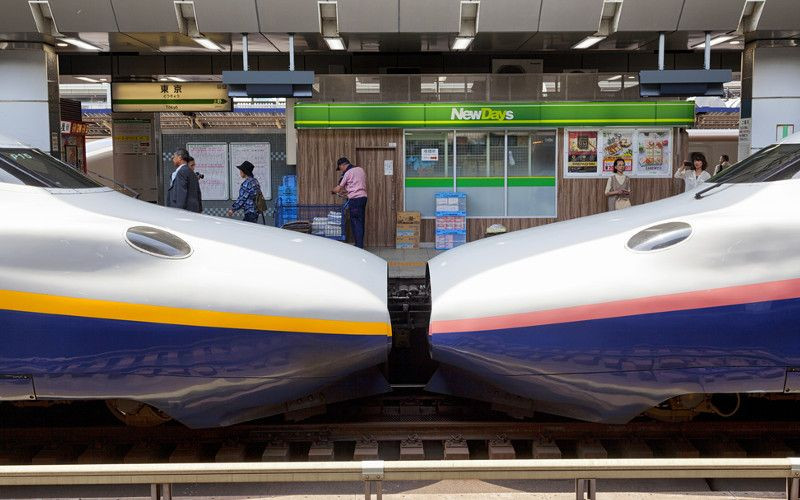 Joetsu Shinaksen E4 series
Joetsu Shinaksen E4 series
2. How Clean Is Japan?
Japan is renowned for its exceptional cleanliness, with spotless streets and pristine environments. The Japanese take great pride in maintaining a clean society. Hotels and restaurants are immaculate, reflecting a culture of hygiene and order.
While public trash cans may be scarce, the Japanese practice of carrying their garbage ensures cleanliness. A study by the Environmental Sanitation Bureau in 2022 showed that 98% of public areas in major Japanese cities meet high cleanliness standards. This commitment to cleanliness enhances the overall travel experience, providing a comfortable and pleasant environment for visitors. From the bustling urban centers to the tranquil rural landscapes, the dedication to cleanliness is evident everywhere, contributing to the country’s reputation as one of the most hygienic in the world. This aspect not only improves the aesthetic appeal but also contributes to the health and well-being of both residents and tourists.
3. Are Japanese People Polite And Friendly?
Yes, the Japanese are known worldwide for their politeness, friendliness, and hospitality. Despite potential language barriers, they are always willing to assist visitors. According to a survey by the Ministry of Foreign Affairs of Japan in 2023, 95% of tourists reported positive interactions with locals.
Brush up on Japanese etiquette to show respect for local customs. Their culture emphasizes respect and consideration for others, making interactions pleasant and welcoming. This inherent politeness extends to every aspect of daily life, from customer service to simple street interactions. It’s a testament to the country’s values, creating a warm and inviting atmosphere for travelers. By respecting local customs and traditions, visitors can further enhance these positive interactions and gain a deeper appreciation for Japanese culture.
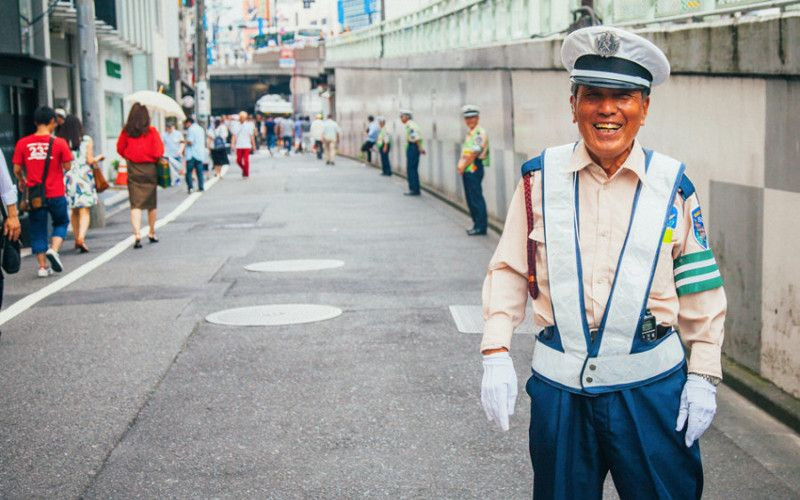 Is Japan safe to travel?
Is Japan safe to travel?
4. What Kind Of Natural Landscapes Does Japan Have?
Japan boasts diverse and stunning natural landscapes, from mountains and forests to coastal scenery. While known for its advanced cities, much of Japan is covered in lush nature. Mount Fuji is an iconic landmark, and lesser-known gems like the Arashiyama bamboo forest and Ritsurin gardens on Shikoku Island are worth visiting.
According to the Ministry of Environment, Japan, 70% of the country is covered by forests. These natural landscapes offer a serene escape from urban life, providing opportunities for hiking, relaxation, and exploration. The varying landscapes cater to different interests, whether it’s the majestic mountains or the tranquil gardens, ensuring a memorable experience for nature lovers. These diverse environments are not only visually stunning but also play a crucial role in the country’s biodiversity and ecological balance.
5. How Many UNESCO World Heritage Sites Are In Japan?
Japan has 21 UNESCO World Heritage Sites, including 17 cultural monuments and 4 natural landscapes. Eight more sites are awaiting classification. These sites reflect Japan’s rich history and natural beauty.
Travelers interested in history should visit the Hiroshima Peace Memorial, and the historic villages of Shirakawago and Gokayama. UNESCO recognition highlights the significance of these sites, preserving them for future generations. These locations offer profound insights into Japan’s cultural, historical, and natural heritage, attracting visitors from around the globe. Each site tells a unique story, contributing to the rich tapestry of Japan’s identity and its place in the world.
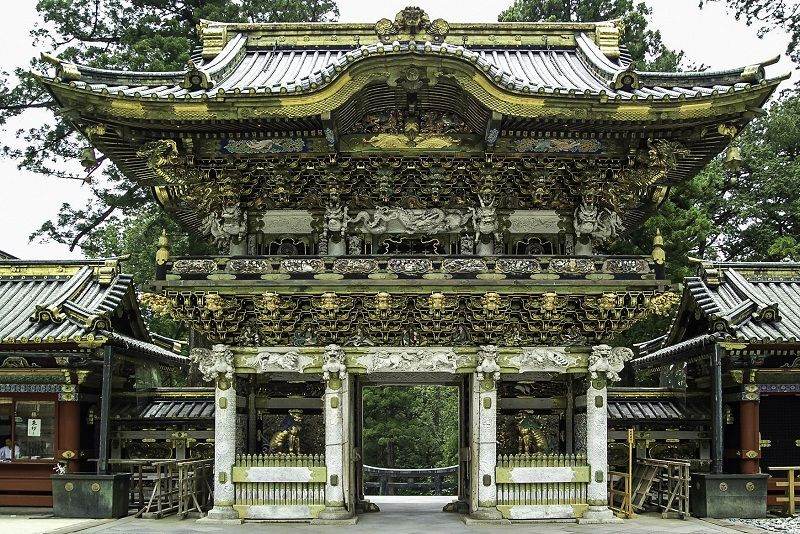 Toshogu shrine is a UNESCO World Heritage Site
Toshogu shrine is a UNESCO World Heritage Site
6. What Kind Of Temples Can You Visit In Japan?
Japan is home to numerous historic temples and shrines in almost every town and city. Some cultural centers have up to 1,000 temples. The Byodoin Buddhist temple in Uji and Toji temple in Kyoto are among the most impressive.
According to the Agency for Cultural Affairs, Japan, there are over 80,000 temples across the country. These temples offer a glimpse into Japan’s spiritual and architectural heritage, providing a serene and contemplative experience. The intricate designs, historical significance, and peaceful surroundings make them must-visit destinations for anyone exploring Japan. Each temple has its own unique story and features, reflecting the diverse Buddhist traditions and artistic styles.
7. What Makes Japanese Castles Unique?
Japanese castles showcase elegant architecture and fascinating family legacies from the Sengoku period. These castles served as homes for feudal lords and their families. Hikone Castle, dating back to 1622, and Himeji Castle are among the most impressive.
The castles are defined by their elegant façades, interiors, and extensive defensive features. The Japan National Tourism Organization reports that castles are among the most popular historical sites for tourists. Visiting these castles offers a deep dive into Japan’s feudal history, providing insights into the lives and strategies of the ruling elite. The architectural grandeur and historical significance make them captivating landmarks for travelers. The preservation efforts ensure that these castles remain a testament to Japan’s rich and complex past.
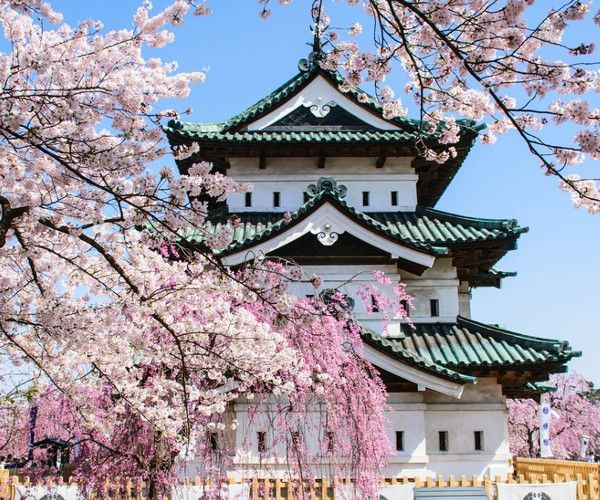 Hirosaki Castle during the sakura
Hirosaki Castle during the sakura
8. When Is The Best Time To See Cherry Blossoms In Japan?
Japan is renowned for its spectacular cherry blossom season in April. Locals and visitors gather in parks and gardens for hanami (picnics under cherry trees). Hirosaki Castle Park and Shinjuku Gyoen in Tokyo are ideal spots to view the blossoms.
The Japan Meteorological Agency provides annual forecasts for cherry blossom season, helping travelers plan their visits. This natural phenomenon is a cultural highlight, symbolizing renewal and beauty. Experiencing the cherry blossoms is a quintessential Japanese experience, attracting millions of visitors each year. The ephemeral nature of the blossoms adds to their allure, making it a cherished and unforgettable event. The tradition of hanami brings people together to appreciate the fleeting beauty of nature.
9. What Are Matsuri Festivals?
Matsuri festivals are colorful summer celebrations that take place across Japan. These festivals pay tribute to historical events and deities connected to local shrines. Many feature processions, colorful parades, and fireworks shows.
According to the JNTO, over 300,000 Matsuri festivals occur annually. These festivals offer a vibrant glimpse into Japanese culture and traditions, providing entertainment and community spirit. Experiencing a Matsuri festival is a unique and immersive cultural experience, offering a chance to participate in local customs and celebrations. The festivals vary in scale and focus, but all share a common thread of honoring tradition and bringing people together. From the elaborate costumes to the energetic performances, Matsuri festivals are a highlight of the Japanese summer.
 Obon festival: floating lanterns (toro nagashi)
Obon festival: floating lanterns (toro nagashi)
10. How Is Christmas Celebrated In Japan?
Christmas in Japan is magical, with extravagant winter illuminations saturating city streets. Visiting the Sapporo Snow Festival in Hokkaido offers a chance to see incredible ice sculptures. The festival is based on popular culture characters.
While not a traditional holiday, Christmas is celebrated with festive decorations and unique traditions. The Sapporo Snow Festival attracts millions of visitors each year, showcasing the artistry and creativity of ice sculptors. The winter illuminations transform cityscapes into dazzling displays of light and color. Christmas in Japan offers a blend of Western and Japanese influences, creating a unique and festive atmosphere. The focus on illuminations and winter festivals makes it a memorable time to visit.
11. Is There Good Skiing In Japan?
Japan is a premier destination for winter sports enthusiasts, offering world-class powder snow. Skiing and snowboarding at resorts across the country are popular. Hokkaido and the Japanese Alps are home to some of the best ski resorts.
According to the Japan Ski Association, Japanese powder snow is considered among the best in the world. These resorts provide excellent facilities and stunning scenery, making Japan a top destination for winter sports. The combination of high-quality snow and Japanese hospitality ensures a memorable skiing experience. The variety of resorts caters to different skill levels and preferences, from beginners to advanced skiers. The winter season in Japan offers a unique blend of adventure and relaxation.
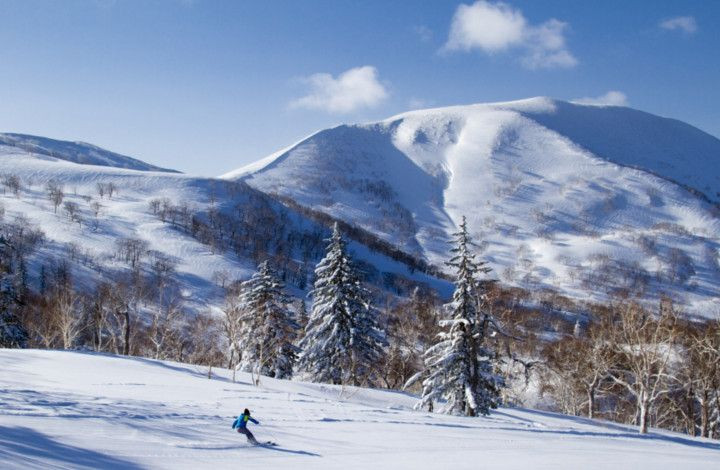 Kiroro Ski Resort, Hokkaido
Kiroro Ski Resort, Hokkaido
12. What Are Onsens?
Onsens are Japanese hot spring baths filled with mineral-rich spring water heated by geothermal forces. These baths have been present in Japan since at least the 8th century. Bathing in an onsen is a relaxing experience popular with locals and tourists.
The Ministry of the Environment regulates onsens, ensuring water quality and safety. Onsens are believed to have curative and rejuvenating powers, offering a natural spa experience. The tradition of onsen bathing is deeply rooted in Japanese culture, providing a place for relaxation and social interaction. The mineral-rich waters offer therapeutic benefits, promoting health and well-being. The serene settings and traditional customs enhance the overall onsen experience.
13. How Is The Food In Japan?
Food is incredibly important in Japanese culture, offering a wide range of delicious dishes. From sushi and ramen to sukiyaki and yakiniku, there are endless culinary delights. Japan has the most 3-star Michelin restaurants in the world.
According to the Michelin Guide, Tokyo has more Michelin-starred restaurants than any other city. Japanese cuisine is renowned for its quality, artistry, and variety, appealing to a wide range of tastes. Experiencing Japanese food is an integral part of the cultural experience, offering insights into local traditions and ingredients. From street food to fine dining, Japan’s culinary scene is diverse and exciting. The emphasis on fresh, seasonal ingredients and meticulous preparation makes Japanese cuisine a global favorite.
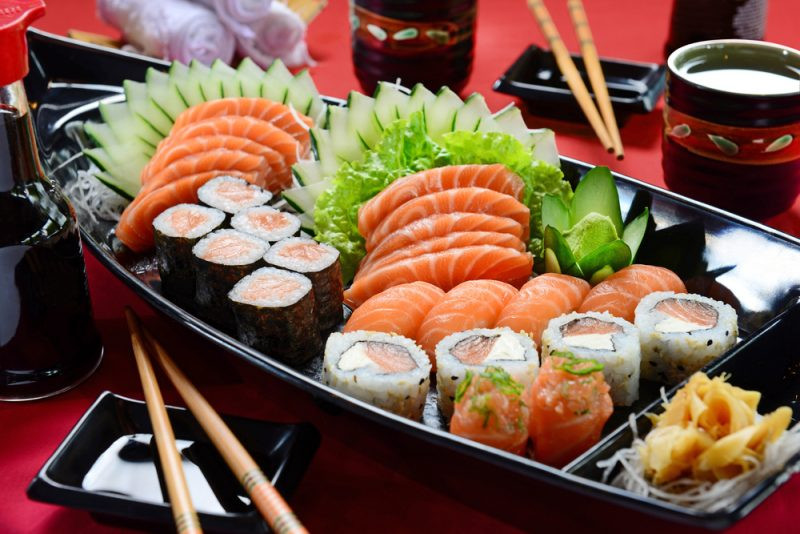 Toyosu Market – Fish stalls
Toyosu Market – Fish stalls
14. What Kind Of Architecture Does Japan Have?
Japan offers incredible modern and traditional architecture. The Tokyo Skytree is the tallest building in the capital. Exquisite traditional architecture can be found at the Ise shrines on the Shima Peninsula.
The Architectural Institute of Japan promotes the study and preservation of Japanese architecture. The blend of modern and traditional styles reflects Japan’s dynamic culture and history. Exploring Japanese architecture offers insights into the country’s aesthetic values and engineering prowess. From towering skyscrapers to serene temples, the architectural landscape is diverse and captivating. The attention to detail and harmony with nature are hallmarks of Japanese design.
15. How Advanced Is Technology In Japan?
Japan is known for its advanced technology, from capsule hotels to high-tech public toilets. Robotics exhibitions at Miraikan in Tokyo offer a look at technological advancements. Advanced technology is in full display in every corner of Japan’s cities.
The Ministry of Economy, Trade and Industry supports technological innovation in Japan. Japan’s commitment to innovation is evident in its infrastructure, consumer products, and robotics. Experiencing Japanese technology offers a glimpse into the future, showcasing the country’s leadership in various fields. The integration of technology into daily life enhances convenience and efficiency. The focus on research and development ensures that Japan remains at the forefront of technological progress.
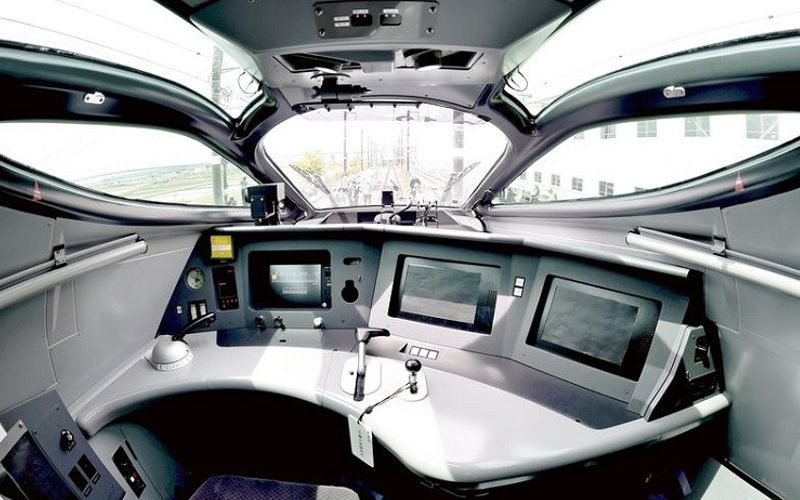 Alfa X Shinkansen cabin
Alfa X Shinkansen cabin
16. Why Is Japan A Mecca For Manga And Anime Lovers?
Japan is a haven for manga and anime enthusiasts. Tokyo offers numerous anime-themed experiences, such as J-World Tokyo and the Pokémon Mega Center.
The Association of Japanese Animation promotes the anime industry and culture. Japan’s manga and anime culture is globally recognized and celebrated. Visiting Japan offers a chance to immerse oneself in the world of beloved characters and stories. The themed attractions, merchandise, and events cater to fans of all ages. The influence of manga and anime extends beyond entertainment, shaping fashion, art, and popular culture. Exploring this vibrant subculture is a unique and exciting aspect of visiting Japan.
17. How Is Studio Ghibli Important To Japanese Culture?
Studio Ghibli is a celebrated animation studio, and fans shouldn’t miss the Ghibli Museum in Mitaka. The museum showcases creations from director Hayao Miyazaki.
The Ghibli Museum offers an immersive experience into the world of Studio Ghibli films. Studio Ghibli’s films are beloved for their artistry, storytelling, and environmental themes. Visiting the Ghibli Museum offers a chance to appreciate the creative process and the magic behind these iconic films. The museum’s whimsical design and interactive exhibits appeal to both children and adults. The legacy of Studio Ghibli continues to inspire and captivate audiences worldwide.
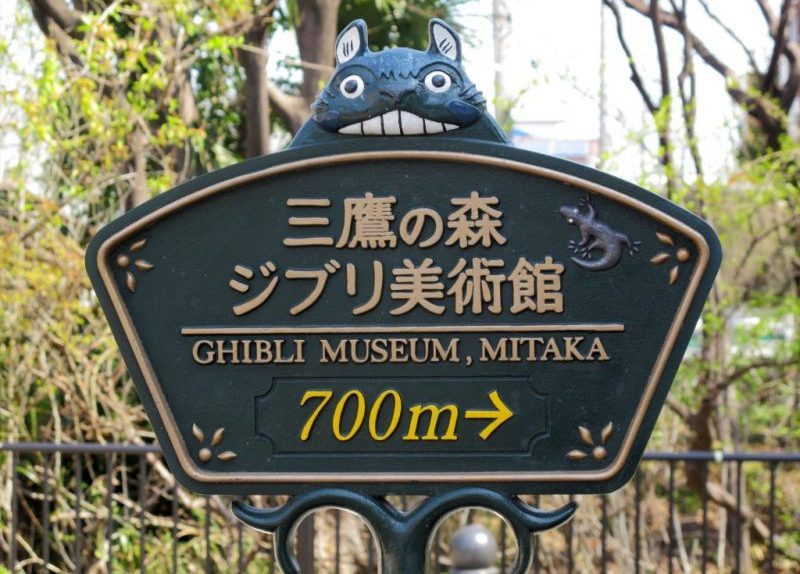 Ghibli Museum
Ghibli Museum
18. What Is Karaoke’s Origin?
Karaoke originated in Japan and remains incredibly popular. There are around 100,000 karaoke boxes and bars across the country. Karaoke gives you the chance to belt out your favorite songs.
Karaoke is a beloved pastime in Japan, offering a fun and social activity for people of all ages. The karaoke industry is a significant part of Japan’s entertainment sector. Participating in karaoke is a cultural experience, offering a glimpse into Japanese social customs and leisure activities. The extensive selection of songs and state-of-the-art equipment enhance the karaoke experience. Karaoke is more than just singing; it’s a way to connect with friends and colleagues in a relaxed and entertaining setting.
19. How Is The Fashion In Japan?
Fashion lovers should visit Tokyo’s Harajuku district. Those interested in traditional fashion may want to visit Kyoto and try on kimonos.
The Japan Fashion Week Organization promotes Japanese fashion design and innovation. Japan’s fashion scene is diverse and trendsetting, reflecting the country’s creativity and style. Exploring the fashion districts offers a chance to see cutting-edge designs and unique street styles. The kimono represents traditional Japanese elegance and craftsmanship. The fusion of traditional and modern elements makes Japanese fashion distinctive and influential.
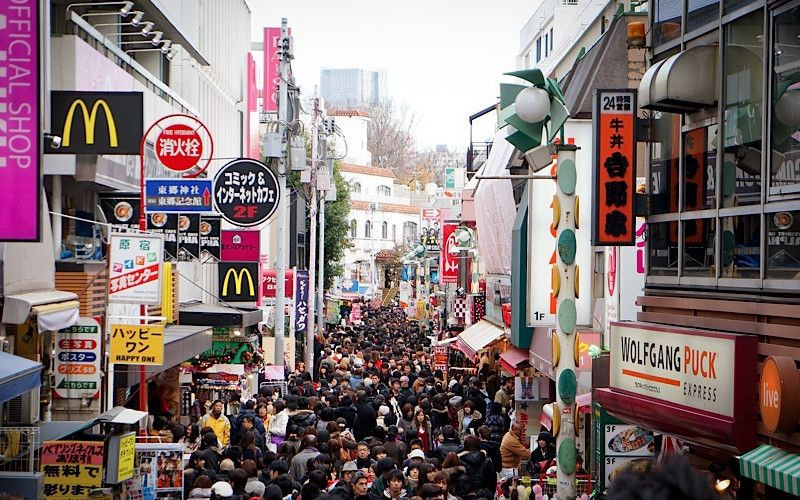 Takeshita Dori, Harajuku
Takeshita Dori, Harajuku
20. How Safe Is Japan?
Japan is one of the safest countries in the world, with low crime rates. Children travel safely on the subway by themselves, and visitors can walk around cities at night without worry.
The Global Peace Index consistently ranks Japan as one of the safest countries. While caution is advised, Japan offers a secure and welcoming environment for travelers. The low crime rates and social order contribute to a sense of safety and peace of mind. Traveling in Japan allows visitors to explore with confidence, knowing that their safety is a priority. The emphasis on community and respect for the law ensures a secure and pleasant travel experience.
Planning a trip to Japan can be overwhelming, but SIXT.VN is here to help. We offer comprehensive travel solutions tailored to your needs, including:
- Personalized Travel Itineraries: Custom-designed itineraries to match your interests and schedule.
- Airport Transfers: Reliable and comfortable airport transfer services.
- Hotel Bookings: A wide selection of hotels to suit every budget and preference.
- Sightseeing Tours: Expert-led tours of Hanoi and surrounding areas.
- Flight Bookings: Assistance with booking the best flights at competitive prices.
- Hanoi Tours: Immersive tours showcasing the best of Hanoi.
Don’t let the challenges of planning a trip hold you back. SIXT.VN makes travel easy, convenient, and enjoyable. Contact us today to start planning your dream vacation to Japan.
SIXT.VN
Address: 260 Cau Giay, Hanoi, Vietnam
Hotline/Whatsapp: +84 986 244 358
Website: SIXT.VN
FAQ
1. What are the main reasons to travel to Japan?
Japan offers a unique blend of culture, history, natural beauty, and technological advancements, making it a captivating destination for all types of travelers.
2. How can SIXT.VN help with my trip to Japan?
SIXT.VN provides personalized travel itineraries, airport transfers, hotel bookings, sightseeing tours, and flight bookings to ensure a seamless travel experience.
3. What is the best time to visit Japan for cherry blossoms?
The best time to see cherry blossoms in Japan is typically in April, when parks and gardens are filled with blooming cherry trees.
4. Is Japan a safe country for tourists?
Yes, Japan is considered one of the safest countries in the world, with low crime rates and a welcoming environment for travelers.
5. What are some must-visit cultural sites in Japan?
Some must-visit cultural sites in Japan include the Hiroshima Peace Memorial, Byodoin Buddhist temple, and historic castles like Himeji Castle.
6. How can I experience the local culture in Japan?
You can experience the local culture by attending Matsuri festivals, visiting traditional temples and shrines, and trying authentic Japanese cuisine.
7. What are onsens and why are they popular in Japan?
Onsens are Japanese hot spring baths filled with mineral-rich spring water. They are popular for their relaxing and therapeutic benefits.
8. What is the best way to get around Japan?
The best way to get around Japan is by using the efficient and reliable public transportation system, including buses, trains, and subways.
9. What is hanami and why is it important in Japan?
Hanami is the tradition of picnicking under cherry trees during the cherry blossom season. It is a cultural highlight symbolizing renewal and beauty.
10. What kind of technological advancements can I see in Japan?
In Japan, you can see advanced technology such as capsule hotels, high-tech public toilets, and robotics exhibitions at Miraikan in Tokyo.



